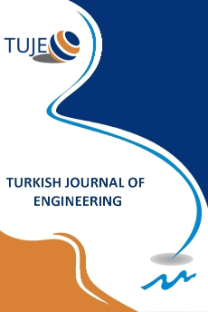STUDY THE EFFECT OF HAIR STYLE PRODUCTS ON THE QUALITY OF DOMESTIC WASTEWATER-WAX AS CASE STUDY
___
AWWA, WEF, APHA (1998). Standard Methods for the Examination of Water and Wastewater Closed Reflux, Titrimetric Method (5220 C) page 5-16/17.Bouillon, C. and Wilkinson, J. (2005). The science of hair care. Second edition. Taylor & Francis Group, LLC. ISBN 9780824759698.
Editorial Department of D & C (2015) "Analysis of Chinese Cosmetics" Industry Detergent & Cosmetics Vol. 1, 8-11.
Ficheux, A.S., Bernard, A., Chevillotte, G., Dornic, N. and Roudot A.C., (2016) "Probabilistic assessment of exposure to hair cosmetic products by the French population". Journal of Food and Chemical Toxicology, Vol. 92, 205-216
Frosch, F., Hinz, W., Pfrommer, E., Reinhardt, R. D., Richter, H., Sperling, K. and Wekel, H. U. (1994). Assessment of polymers for hair setting. Spray Technology & Marketing, May 1994, pp. 25-29.
Bogacki, J., Naumczyk, J., Marcinowski, P. and Kucharska, M. (2011). "Treatment of cosmetic wastewater using physicochemical and chemical methods", CHEMIK Vol. 65, 2, 94-97.
Ma, G. and Chen, J. (2018). "Nitrogen and Phosphorus Pollutants in Cosmetics Wastewater and Its Treatment Process of a Certain Brand". IOP Conf. Series: Earth and Environmental Science, Volume 113, 012051.
Marsh, J., Gray, J. and Tosti, A. (2015). Healthy Hair. New York: Springer International Publishing Switzerland
Robbins, C. R. (2012). Chemical and Physical Behavior of Human Hair. 5th Edition ed. Heidelberg: Springer. ISBN 978-3-642-25610-3.
Schueller, R. and Romanowski, P. (2000). "Fundamentals of formulating hair care products". Cosmetics and toiletries 115 (10), 67-73.
Templeton, M. and Butler, D. (2011). An Introduction to Wastewater Treatment. London: Ventus Publishing ApS. ISBN 978-87-7681-843-2.
U.S. Environmental Protection Agency (U.S. EPA), (2002). Non-confidential inventory update reporting production volume information. Toxic Substances Control Act (TSCA) Inventory,
Yin, N. E., Kissinger, R. H., Tolgyesi, W. S. and Cottington, E. M. (1977). "The effect of fiber diameter on the cosmetic aspects of hair". Journal of the Society of Cosmetic Chemists, Vol. 28, No. 3, 139-150.
- ISSN: 2587-1366
- Yayın Aralığı: Yılda 4 Sayı
- Başlangıç: 2017
- Yayıncı: Mersin Uüniversitesi
ANTIBIOTIC APPLICATIONS IN FISH FARMS AND ENVIRONMENTAL PROBLEMS
Tolga Bahadır, Hakan Çelebi, İsmail Şimşek, Şevket Tulun
Tolga BAHADIR, Hakan ÇELEBİ, İsmail ŞİMŞEK, Şevket TULUN
TUNCAY ŞİMŞEK, Mustafa BARİŞ, Sadan OZCAN, ADNAN AKKURT
THE REMOVAL OF NICKEL IONS WITH WALNUT SHELL
Tolga Bahadır, İsmail Şimşek, Şevket Tulun, Mustafa Karataş
INVESTIGATION OF OXYGEN-RELATED DEFECTS IN ZnO:GROWING TIME AND MnCONCENTRATION EFFECTS
Saadet YILDIRIMCAN, SELMA ERAT
Şevket TULUN, Tolga BAHADIR, İsmail ŞİMŞEK, Mustafa KARATAŞ
THE BIOSYNTHESIS OF SILVER NANOPARTICLESBY CYTOPLASMIC FLUID OFCORIOLUS VERSICOLOR
Fatma DENİZ, Ali Osman ADİGÜZEL, Mehmet Ali MAZMANCİ
STUDY THE EFFECT OF HAIR STYLE PRODUCTS ON THE QUALITY OF DOMESTIC WASTEWATER-WAX AS CASE STUDY
Muhammed SALEH, Mutlu YALVAÇ, Ferhat SİME, Mehmet Ali MAZMANCİ
